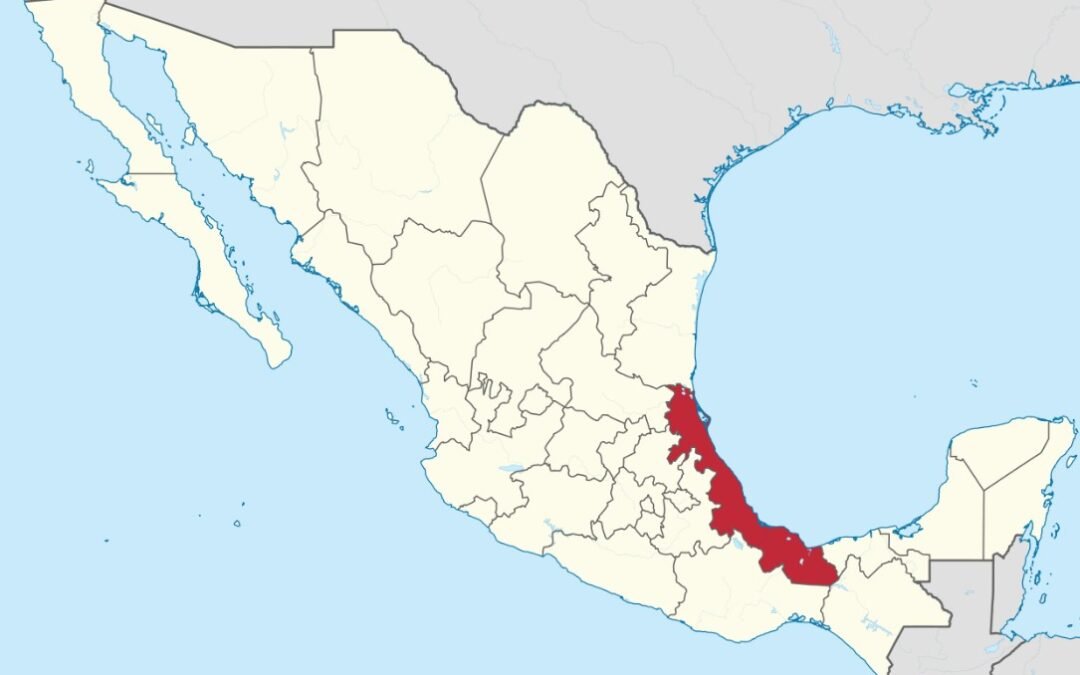
Articles

Mexican States
Southwest United States
Heritage and Governance
The Indigenous Groups Along the Lower Rio Grande
The American state of Texas and the Mexican state of Tamaulipas share a long border along the Rio Grande River. For thousands of years, Native American tribes either lived along this river or passed over it on their way south (or north). This boundary was finalized in 1848, but a century earlier, much of the Rio Grande River area was being settled by Spanish and Mexican settlers who had come from other parts of Mexico to settle the lands that were already inhabited by many tribal groups.
Indigenous Puebla and the Census
From 1895 to 2015, the Mexican census has painted a picture of Mexico’s people, providing details about languages spoken (Spanish, foreign and indigenous), religion, education, literacy, employment and migration. From the beginning, the Mexican census provided details about indigenous languages spoken by its citizens. However, in the first half century, it is possible that there were undercounts of indigenous language speakers because some may have failed to declare their language status for fear of affecting their position within the community. In addition, poor communication channels with rural, isolated indigenous communities may also have caused an undercount of the indigenous people.
Indigenous Veracruz and the Census
From 1895 to 2015, the Mexican census has painted a picture of Mexico’s people, providing details about languages spoken (Spanish, foreign and indigenous), religion, education, literacy, employment and migration. From the beginning, the Mexican census provided details about indigenous languages spoken by its citizens. However, in the first half century, it is possible that there were undercounts of indigenous language speakers because some may have failed to declare their language status for fear of affecting their position within the community. In addition, poor communications channels with rural, isolated indigenous communities may also have caused an undercount of the indigenous people.
Quintana Roo and the Census
The present-day state of Quintana Roo is one of three Mexican states on the Yucatán Peninsula. In the pre-Hispanic period, Quintana Roo and the Yucatán were part of the Mayan World. In the colonial period, Quintana Roo became part of the Spanish Empire although much of the state maintained their Mayan culture and language.
Indigenous Jalisco and the Census
From 1895 to 2015, the Mexican census has painted a picture of Mexico’s people, providing details about languages spoken (Spanish, foreign and indigenous), religion, education, literacy, employment and migration. From the beginning, the Mexican census provided details about indigenous languages spoken by its citizens. However, in the first half century, it is possible that there were undercounts of indigenous language speakers because some may have failed to declare their language status for fear of affecting their position within the community. In addition, poor communications channels with rural, isolated indigenous communities may also have caused an undercount of the indigenous people.
Indigenous Michoacán and the Census
From 1895 to 2015, the Mexican census has painted a picture of Mexico´s people, providing details about languages spoken (Spanish, foreign and indigenous) religion, education, literacy, employment and migration. From the beginning, the Mexican census provided details about indigenous languages spoken by its citizens. However, in the first half century, it is possible that there were undercounts of indigenous language speakers because some may have failed to declare their language status for fear of affecting their position within the community. In addition, poor communications channels with rural, isolated indigenous, isolated indigenous communities may also have caused an undercount of indigenous people.
The Africans of Mexico: From Slavery to the 2015 Census
Most people are not very aware of the presence of African slaves in colonial Mexico. In fact, some people believe that the influence of the African to Mexican culture is negligible at best. But the African laborer actually played an important and very indispensable role in the economic success of colonial Mexico. And, in some parts of Mexico, the African made cultural contributions.
The Early Mexican Censuses (1793-1921)
Several estimates of the Mexican population in the late colonial period have been made. Present-day analysts suggest that the 1810 census was over estimated by nearly one-fifth. As noted below, roughly 60% of the population was indigenous in both 1793 and 1810. Persons identified as Spanish (white) who were born in Mexico – not Spain – represented nearly 18% of the population. Individuals of mixed origins (mestizos) represented one-fifth of the population.
Racial and Cultural Identity in Mexico: 2015
In 2016, the Mexican government agency, Instituto Nacional de Estadística Geografía e Informática (INEGI), published the 2015 Intercensal Survey, which upgraded Mexico’s socio-demographic information to the midpoint between the 2010 census and the census to be carried out in 2020. With a sample size of over 6 million homes, this survey provides information on the national, state and municipio level, as of March 15th, 2015.
Indigenous San Luis Potosí and the Census
From 1895 to 2015, the Mexican census has painted a picture of Mexico’s people, providing details about languages spoken (Spanish, foreign and indigenous), religion, education, literacy, employment and migration. From the beginning, the Mexican census provided details about indigenous languages spoken by its citizens. However, in the first half century, it is possible that there were undercounts of indigenous language speakers because some may have failed to declare their language status for fear of affecting their position within the community. In addition, poor communications channels with rural, isolated indigenous communities may also have caused an undercount of the indigenous people.
Indigenous Chihuahua and the Census
From 1895 to 2015, the Mexican census has painted a picture of Mexico’s people, providing details about languages spoken (Spanish, foreign and indigenous), religion, education, literacy, employment and migration. From the beginning, the Mexican census provided details about indigenous languages spoken by its citizens. However, in the first half century, it is possible that there were undercounts of indigenous language speakers because some may have failed to declare their language status for fear of affecting their position within the community. In addition, poor communications channels with rural, isolated indigenous communities may also have caused an undercount of the indigenous people.
The History of the Náhuatl Language: From Aztlán to the Present Day
The Uto-Aztecan Language Group includes a wide range of languages, stretching from Idaho and Montana all the way down to El Salvador in Central America. The Náhuatl language of the Aztecs represents only a small — but significant — part of this linguistic group.
Mexico’s 1921 Census: A Unique Perspective
In the aftermath of the Mexican revolution, Mexico’s Departamento de la Estadística Nacional administered a census that would be unique among Mexico’s census counts administered between 1895 and 2005. In this new census, the Mexican Government decided to ask Mexicans about their perception of their own racial heritage. In the 1921 census, residents of the Mexican Republic were asked if they fell into one of the following categories:
Indigenous Guerrero and the Census
The Mexican Census Paints a Picture
From 1895 to 2015, the Mexican census has painted a picture of Mexico’s people, providing details about languages spoken (Spanish, foreign and indigenous), religion, education, literacy, employment and migration. From the beginning, the Mexican census provided details about indigenous languages spoken by its citizens. However, in the first half century, it is possible that there were undercounts of indigenous language speakers because some may have failed to declare their language status for fear of affecting their position within the community. In addition, poor communications channels with rural, isolated indigenous communities may also have caused an undercount of the indigenous people.
Indigenous Nayarit and the Census
The State of Nayarit, located in northwestern Mexico, has an area of 27,857 square kilometers, thus taking up 1.4% of the national territory of Mexico and is the 23rd largest state. Nayarit’s 1,181,050 inhabitants occupy Nayarit’s twenty municipios but only ranks 29th among the 31 states and the Distrito Federal in terms of population. The capital of Nayarit is Tepic.
Searching for Your Indigenous Roots in Mexico
If a person is trying to determine the name of the Indian tribe from which they descend, they may find out that the answer is very complex and involves many potential tribes. Each and every one of us has four grandparents and eight great- grandparents. Fourteen generations ago – around 1540 – you had 16,384 12th great- grandparents, many of whom may have been indigenous, some of whom travelled from other areas of Mexico to the towns where your ancestors lived.
Indigenous Baja California and the Census
The State of Baja California occupies a total area of 71,450 square kilometers (27,587 square miles), which makes up 3.6% of the national territory. Baja California is the 12th largest state in the Mexican Republic. Politically, this area is divided into a total of five municipios: Ensenada, Mexicali, Tecate, Tijuana and Playas de Rosarito.
Mexico’s Indigenous Identity in the 2015 Intercensal Survey
In 2016, the Mexican government agency, Instituto Nacional de Estadística Geografía e Informática (INEGI), published the 2015 Intercensal Survey, which upgraded Mexico’s socio-demographic information to the midpoint between the 2010 census and the census to be carried out in 2020. With a sample size of over 6 million homes, this survey provides information on the national, state and municipio level, as of March 15th, 2015.
Tools for Finding Ancestors in Mexico
This presentation explores what tools are out there for you to begin your research and quickly advance. In addition to tools, databases and resources, tips on how to decipher records and overcoming brick walls is explored.
This presentation was conducted by Sindy Valdez, for the Society of Hispanic Historical and Ancestral Research.
Navigating FamilySearch.org for Mexican Records
The most important FamilySearch.org link is the following one, which leads you to 66 Mexican collections, primarily Catholic Church records (going back, in some cases, to the 1500s and 1600s) and Civil Registry records (for municipio records).

Article Categories
- Aguascalientes 14
- Arizona 4
- Baja California 5
- Baja California Sur 2
- California 19
- Campeche 4
- Census 36
- Chiapas 3
- Chihuahua 11
- Coahuila 7
- Colima 1
- Conquistador Chronicles 2
- Durango 2
- Ethnic Identity 40
- Genealogy 35
- Guanajuato 8
- Guerrero 8
- Hidalgo 2
- Indigenous Insights 97
- Jalisco 25
- Mexico City 11
- Michoacan 7
- Morelos 4
- Nayarit 3
- New Mexico 4
- Nuevo Leon 7
- Oaxaca 6
- Politics 10
- Puebla 5
- Queretaro 1
- Quintana Roo 4
- San Luis Potosi 11
- Sinaloa 6
- Sonora 16
- Southwest US 26
- State of Mexico 5
- Tabasco 3
- Tamaulipas 11
- Texas 7
- Tlaxcala 7
- Veracruz 6
- Yucatan 6
- Zacatecas 13





















